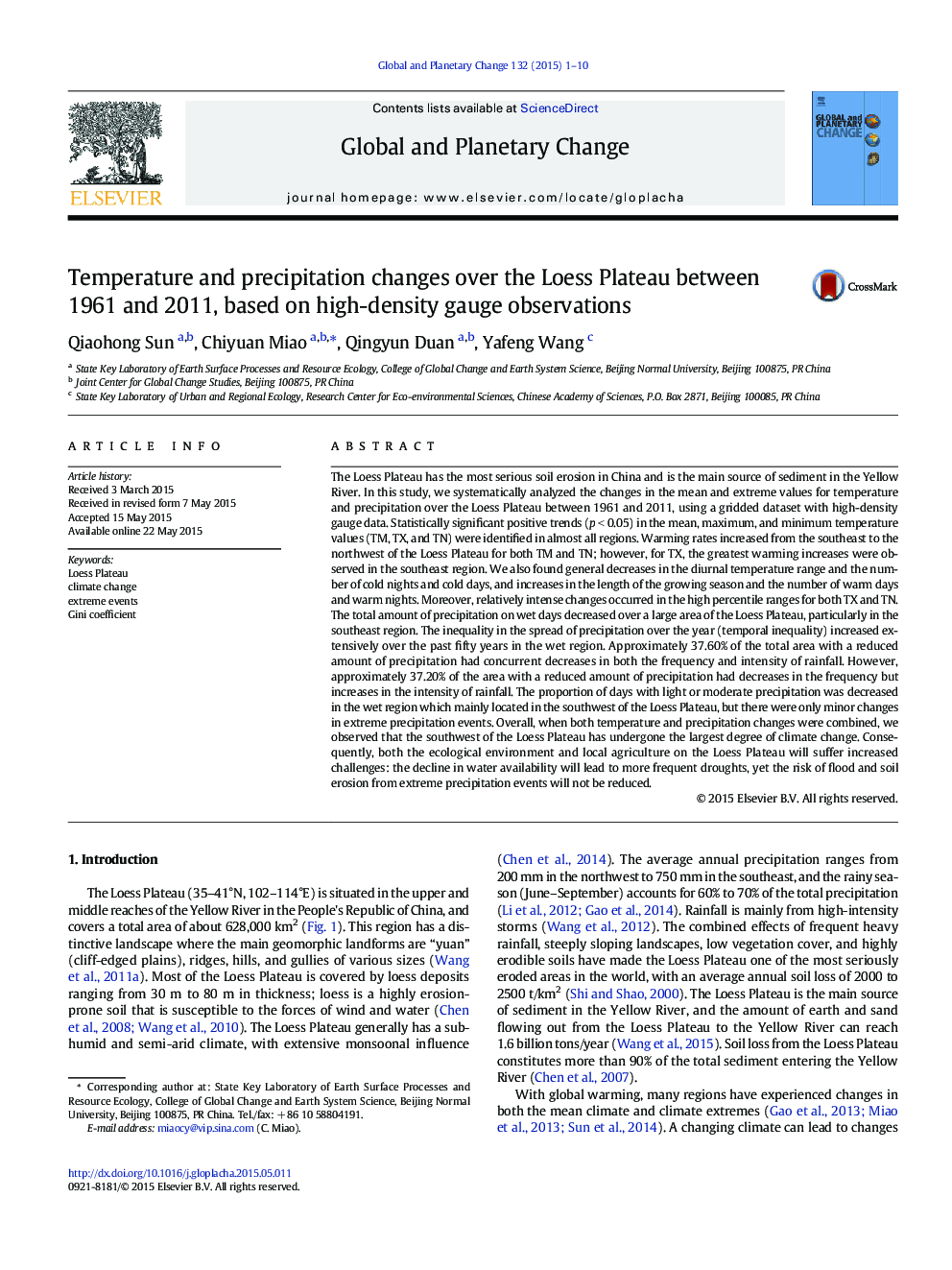| Article ID | Journal | Published Year | Pages | File Type |
|---|---|---|---|---|
| 4463347 | Global and Planetary Change | 2015 | 10 Pages |
•Climate change over the Loess Plateau is analyzed based on high-density gauge.•The mean and extreme values for temperature and precipitation are involved.•The rates of global warming increased from the southeast to the northwest.•The total amount of precipitation on wet days decreased during the past 50 years.•Southwest of the Loess Plateau has undergone the largest degree of climate change.
The Loess Plateau has the most serious soil erosion in China and is the main source of sediment in the Yellow River. In this study, we systematically analyzed the changes in the mean and extreme values for temperature and precipitation over the Loess Plateau between 1961 and 2011, using a gridded dataset with high-density gauge data. Statistically significant positive trends (p < 0.05) in the mean, maximum, and minimum temperature values (TM, TX, and TN) were identified in almost all regions. Warming rates increased from the southeast to the northwest of the Loess Plateau for both TM and TN; however, for TX, the greatest warming increases were observed in the southeast region. We also found general decreases in the diurnal temperature range and the number of cold nights and cold days, and increases in the length of the growing season and the number of warm days and warm nights. Moreover, relatively intense changes occurred in the high percentile ranges for both TX and TN. The total amount of precipitation on wet days decreased over a large area of the Loess Plateau, particularly in the southeast region. The inequality in the spread of precipitation over the year (temporal inequality) increased extensively over the past fifty years in the wet region. Approximately 37.60% of the total area with a reduced amount of precipitation had concurrent decreases in both the frequency and intensity of rainfall. However, approximately 37.20% of the area with a reduced amount of precipitation had decreases in the frequency but increases in the intensity of rainfall. The proportion of days with light or moderate precipitation was decreased in the wet region which mainly located in the southwest of the Loess Plateau, but there were only minor changes in extreme precipitation events. Overall, when both temperature and precipitation changes were combined, we observed that the southwest of the Loess Plateau has undergone the largest degree of climate change. Consequently, both the ecological environment and local agriculture on the Loess Plateau will suffer increased challenges: the decline in water availability will lead to more frequent droughts, yet the risk of flood and soil erosion from extreme precipitation events will not be reduced.
